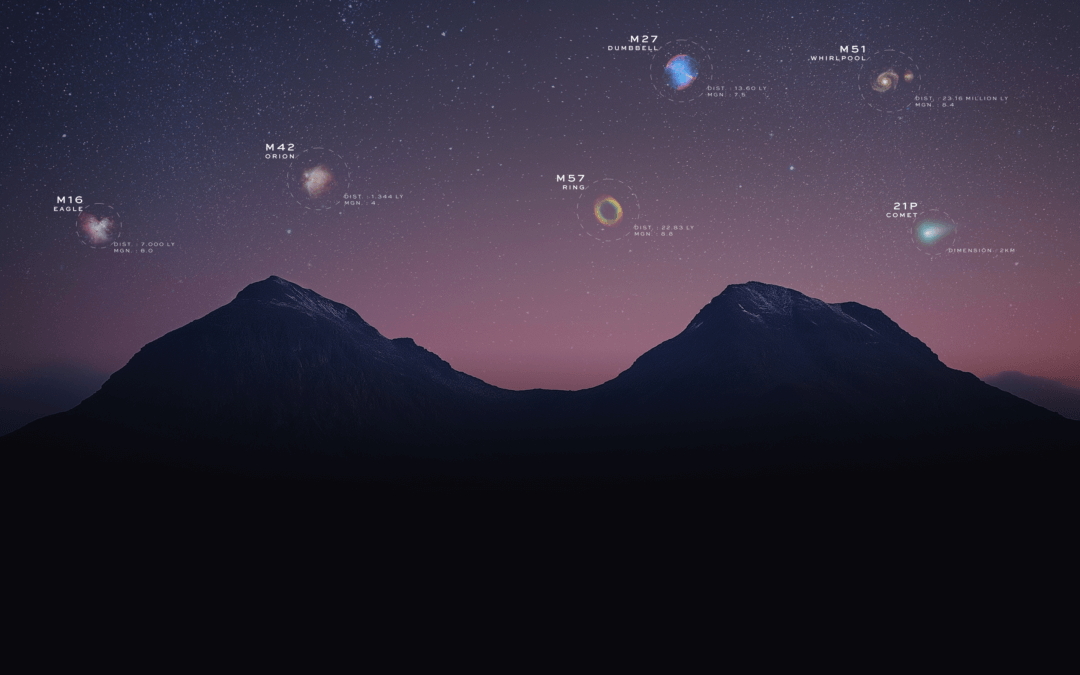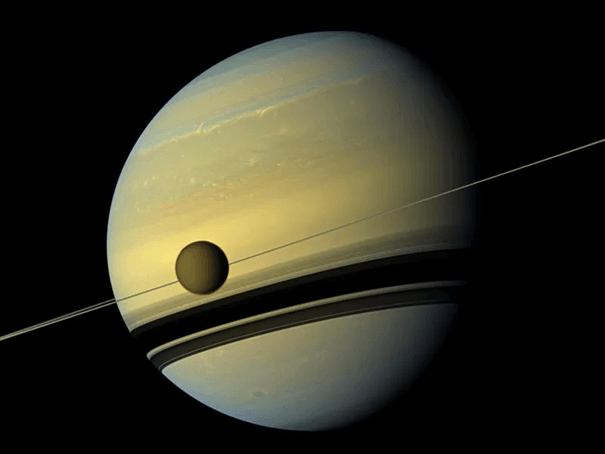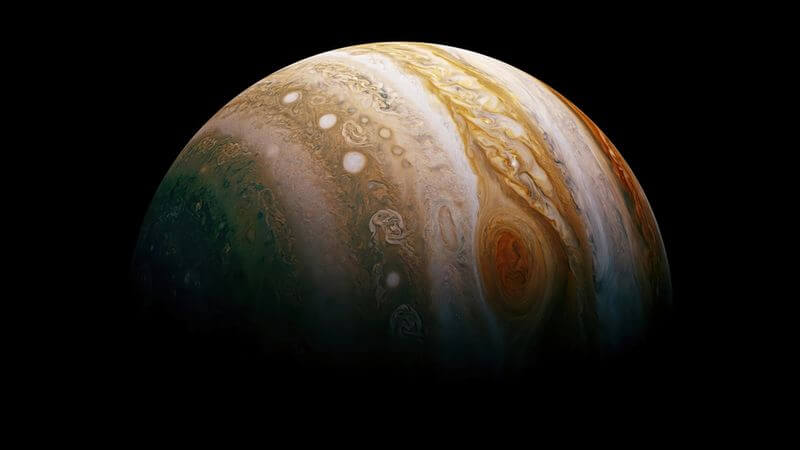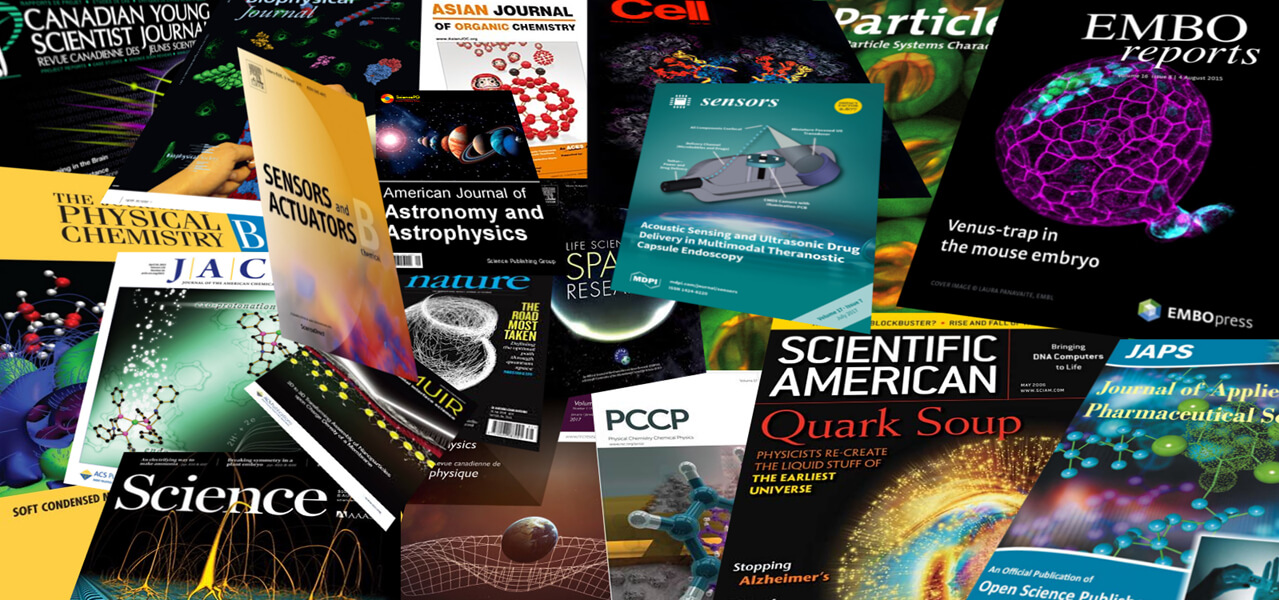This blog, first published July 4, was updated on July 25 and August 24 to reflect the findings from Citizen Astronomers’ observations of exoplanet candidate TOI 1812.01 on July 17 and August 2. Read more about their results below – we still need more observations of this elusive planet on August 27!
On August 27, the distant world may transit, or pass in front of, its star, giving astronomers an opportunity to study it. TOI 1812.01 is still an exoplanet candidate, meaning astronomers need more information to confirm its existence — so the first piece of information they’re looking for is simply whether it exists or not!
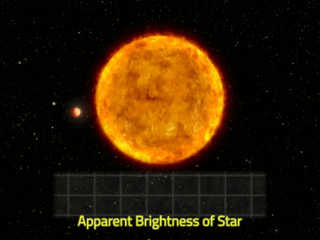
As an exoplanet passes in front of its star, it blocks out a portion of the star’s light.
The transit would be visible across a large swath of the Earth, but it would last 16 hours. So, to fight the rising sun, observers spread out across the world are needed — exactly like the Unistellar Network. In fact, 21 Citizen Astronomers from North America, Europe, and Japan observed TOI 1812.01’s star on July 17 and August 2 in search of a transit. They did not observe a transit on July 17, but Unistellar astronomers think there is tentative evidence for a transit on August 2! However, scientists had previously deemed the most likely period for this exoplanet to be 112 days. This 112-day period means a transit would take place on August 27, so for scientists to be sure they caught the transit on August 2, they need your help in ruling out a transit on August 27.

Credit: NASA
Observing TOI 1812.01
If this is your first time observing an exoplanet transit, first check out our Exoplanet Tutorial page for an overview of the techniques involved. Then, head to Unistellar’s Exoplanet Predictions page, select your location and click on the row for TOI 1812.01 – 27 August to find the observation settings and visibility map.
Our goal is to observe TOI 1812.01’s star during the times when the exoplanet is most likely to transit, based on astronomers’ calculations of its possible orbital periods. With your observations, we’ll be one step closer to knowing how long a year is on this faraway world!
If you have any questions, please reach out to us at [email protected].
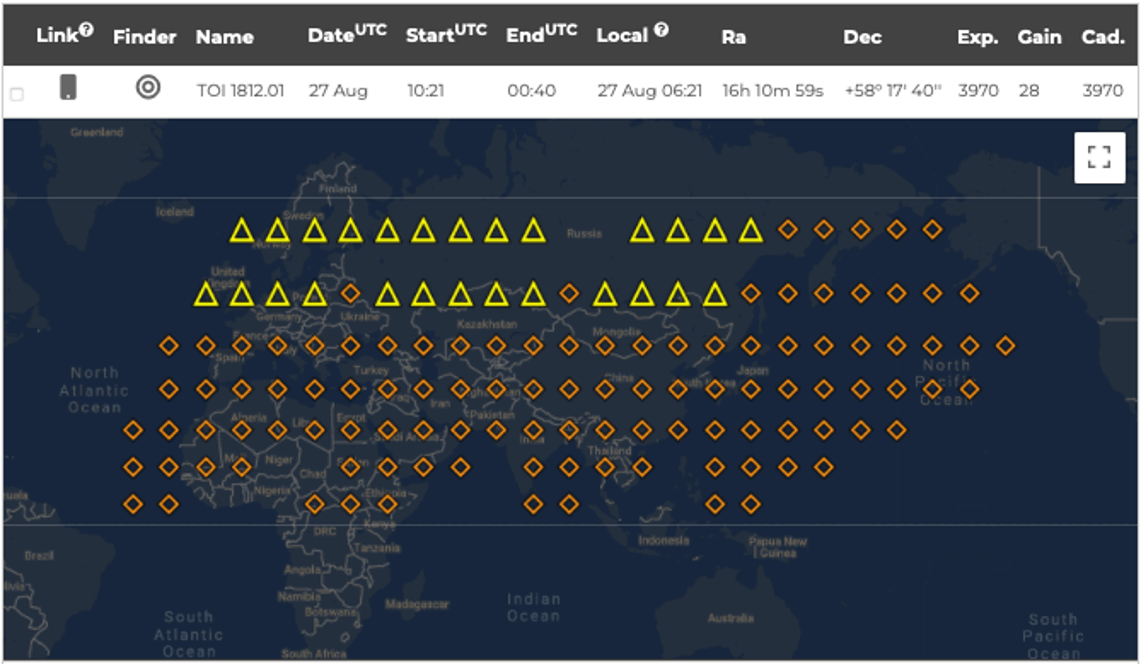
The visibility map of TOI 1812.01’s transit. The orange diamonds denote partial visibility of the event, where an observer at that location will see a portion of the transit. Yellow diamonds denote full visibility, although tracking issues may occur due to the target’s high altitude. Your local time may vary from what is shown.
Further readings
3 Reasons to observe this month
Every month, discover three unmissable celestial events to observe with your Unistellar telescope.
Two spooky appearances in the sky for Halloween
Every month, discover three unmissable celestial events to observe with your Unistellar telescope.
3 Reasons to observe this month Halloween Edition
Every month, discover three unmissable celestial events to observe with your Unistellar telescope.
Titan’s shadows
This summer, the ringed planet Saturn takes centre stage in our night sky, offering amateur astronomers a rare opportunity to observe fascinating transient events.
Observing Eclipses on Jupiter: Cosmic Spectacles Through a Telescope
The latest Unistellar App Update, version V3.0, is now live. Explore a smooth stargazing experience !
Unistellar Community Included In Multiple Scientific Papers
Did you know Unistellar Citizen Astronomers are often cited in published scientific papers? Find out how you can contribute too!

